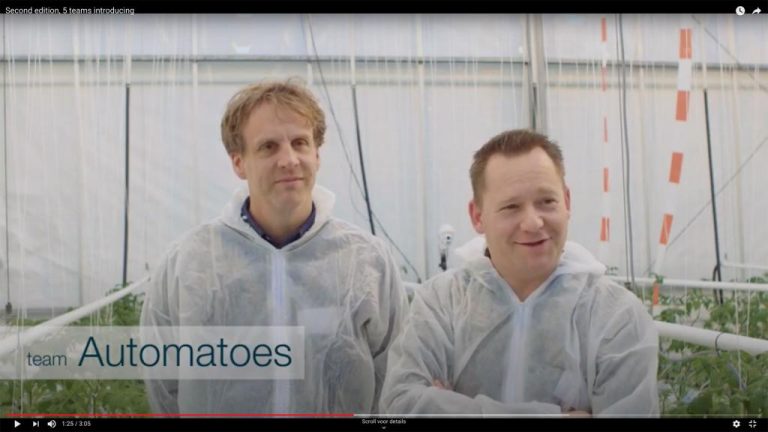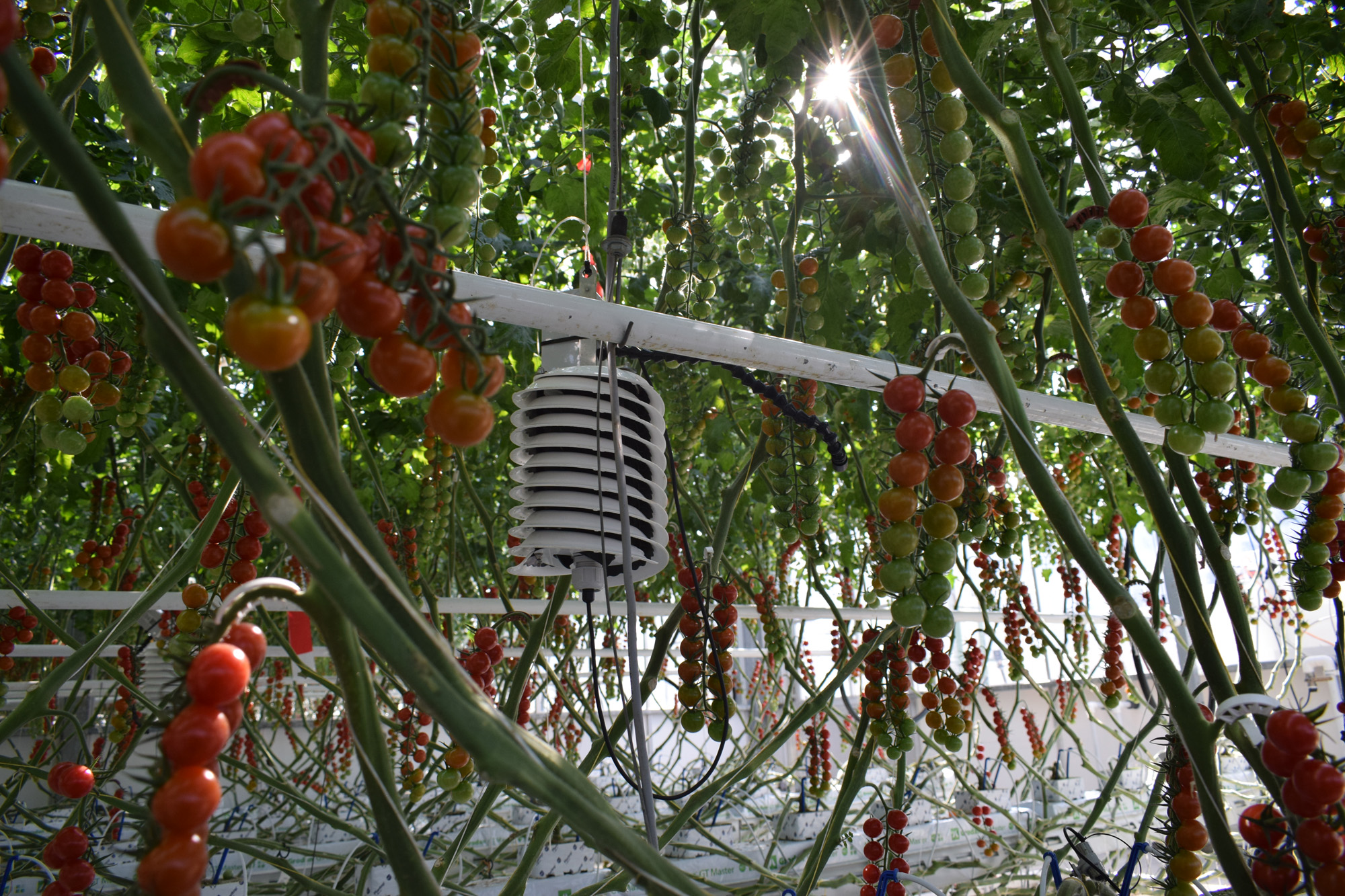Who produces the most and best cherry tomatoes at the lowest cost – a bunch of remote engineers or experienced growers in the greenhouse? We’ll know soon.
Sensors are the only allowed contact in the Autonomous Greenhouse competition. (Photo: WUR)
Greenhouses are a sustainable and efficient export product. Nowhere are vegetables grown as efficiently and predictably as in greenhouses. Regardless of the weather. With minimum energy, water and nutrition, experienced horticulturalists achieve a maximum harvest. And that’s where the crux lies: greenhouses are easy to export, but what about the horticultural experience? Can it be included?
Maximum
That question is the driving force behind the Autonomous Greenhouses competition run by Wageningen University & Research (WUR), in collaboration with the Chinese internet company Tencent, this year for the second time. Teams develop autonomous systems using artificial intelligence that optimise conditions for the yield in greenhouses of about 100 square metres. Initially, more than 200 participants of 26 nationalities in 21 teams came forward.
After the first selection round, there were five teams left. One of these included researchers from TU Delft: Dr Neil Yorke Smith (develops algorithms at EWI) and Dr Tamas Keviczky (Systems & Control at 3mE).
Assignment
Each of the five teams remotely operates a 96 m2 greenhouse at the WUR complex near Bleiswijk. They develop a control system to regulate crop requirements such as light, temperature, CO2 concentration and nutrients. The assignment is to achieve maximum yield with as little energy, water, nutrients and CO2 as possible.
TU researchers Yorke Smith and Keviczky are part of the Automatoes team that also includes employees of greenhouse builder Van der Hoeven, greenhouse automation company Hoogendoorn, and plant expert Keygene. The TU Delft researchers are responsible for the control algorithms and the artificial intelligence.
Taste
Last year, the competition was about growing cucumbers. Five teams operated remotely, and two experienced growers operated a reference greenhouse. At the end of the competition, the growers were outperformed by the computer. This year, the organisation is opting for cherry tomatoes because, apart from quantity, it’s the taste that counts. The market value is a combination of the amount of tomatoes, and their taste; the quantity and quality.
According to Keviczky, the Automatoes team’s approach is special because of its combination of mathematical models and self-learning systems. Physical quantities such as moisture, light and temperature in the greenhouse are controlled through mathematical models, formulas if you like. For more complex matters such as ventilation and irrigation, the team uses self-learning systems that work on the basis of many examples and a large amount of measurement data.
Finale
On 8 June, after more than five months of growing, the evaluation will consider the profit made (market value minus costs), the degree of autonomy in the control, and the team composition. Keviczky is hopeful. “I’ve seen some intermediate results, and I could tell that our team was doing very well. So we are very much looking forward to the final outcome.”
Autonomy
“In the future,” says Research Director David Wallerstein (Tencent) in a video, “artificial intelligence will show whether the plants are growing as expected, or whether they are not doing well. And, in the case of the latter, what needs to be done. Artificial intelligence will help growers improve their skills.”
As far as Keviczky is concerned, the autonomy may be extended a bit further. Pruning and harvesting has been done by hand so far, why not use a robot? Teams currently use their own computers to operate the greenhouse remotely and can intervene at any time if necessary. Keviczky would prefer it if in the future, competition teams could deposit their code in a closed system right from the beginning, thereby making the operation completely autonomous. Then see what happens in the greenhouse.
The results will be announced this Monday 8 June 9 o’clock on: greentech.nl/webinar

Leonard Baart de la Faille (Van der Hoeven) and Rene Beerkens (Hoogendoorn) in a video about the Automatoes’ strategy. (Photo: video still WUR)
Update Mon. 8 June 2020, 16:20:
The team Automatoes has won the Autonomous Greenhouse competition. Team member Tamas Keviczky mailed us: ‘Our team has won the challenge, and it was a “clean sweep”! We were the first on all three criteria: overall profit, sustainability, and AI approach.’
Do you have a question or comment about this article?
j.w.wassink@tudelft.nl


Comments are closed.